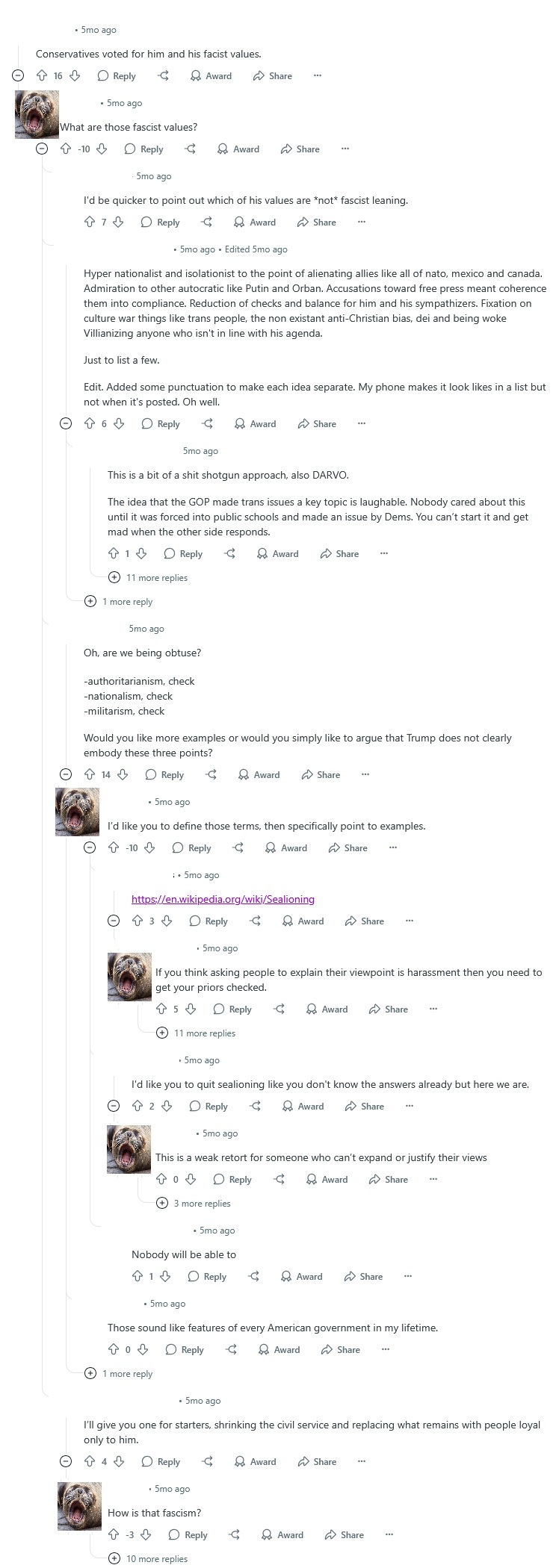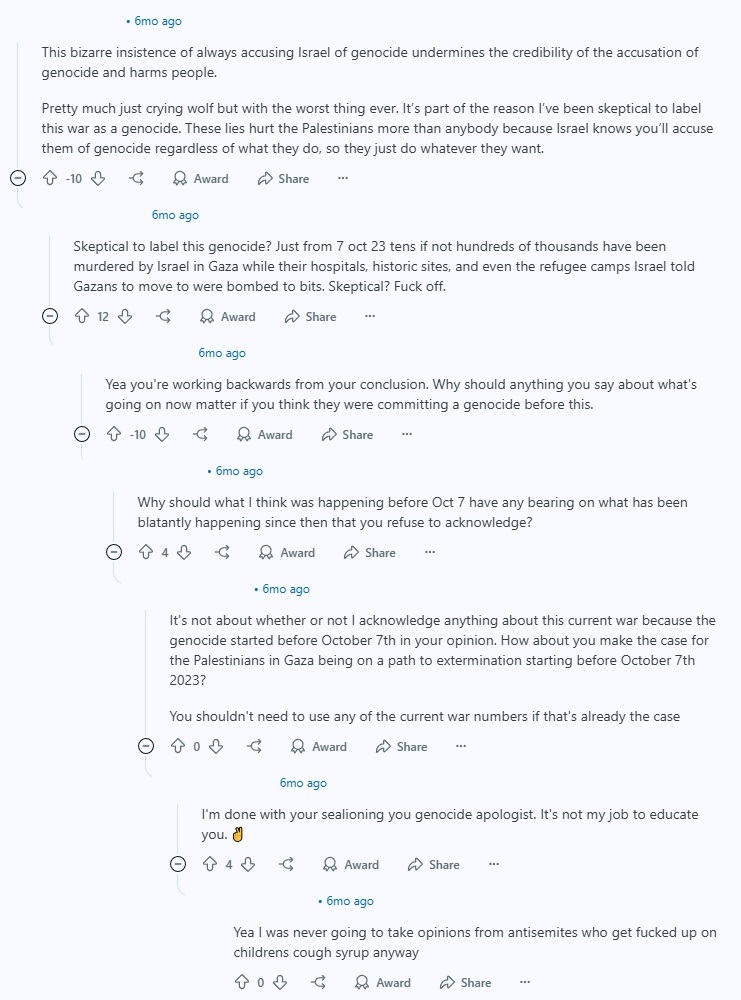A community for posting examples of sealioning and similar forms of trolling
Rules:
-
pls obscure all usernames!
-
This is not a community for trolls. this is a community for raising awareness of these types of trolls and how they operate.
https://en.m.wikipedia.org/wiki/Sealioning
Sealioning (also sea-lioning and sea lioning) is a type of trolling or harassment that consists of pursuing people with relentless requests for evidence, often tangential or previously addressed, while maintaining a pretense of civility and sincerity ("I'm just trying to have a debate"), and feigning ignorance of the subject matter.[5][6][7][8] It may take the form of "incessant, bad-faith invitations to engage in debate",[9] and has been likened to a denial-of-service attack targeted at human beings.[10] The term originated with a 2014 strip of the webcomic Wondermark by David Malki,[1] which The Independent called "the most apt description of Twitter you'll ever see".[2]
Sealions are adorable animals. the trolls, not so much. If you see an example of sealioning, feel free to post it here!
Quick example would be something like a person saying "the US is currently ran by a fascist who supports genocide", which is referring to Donald Trump supporting Israel. The sealion will reply with "who? What genocide?" the sealion knows what the person means but pursues them for relentless requests of evidence as a way of trying to waste the person's time. recognising sealioning is the most effective means of dealing with them

